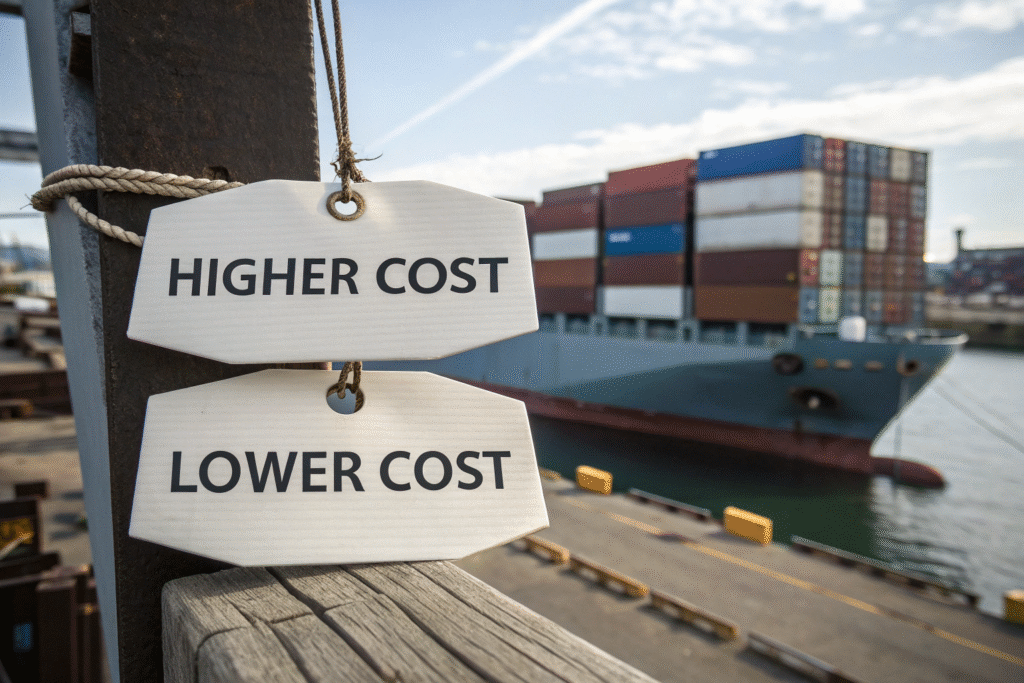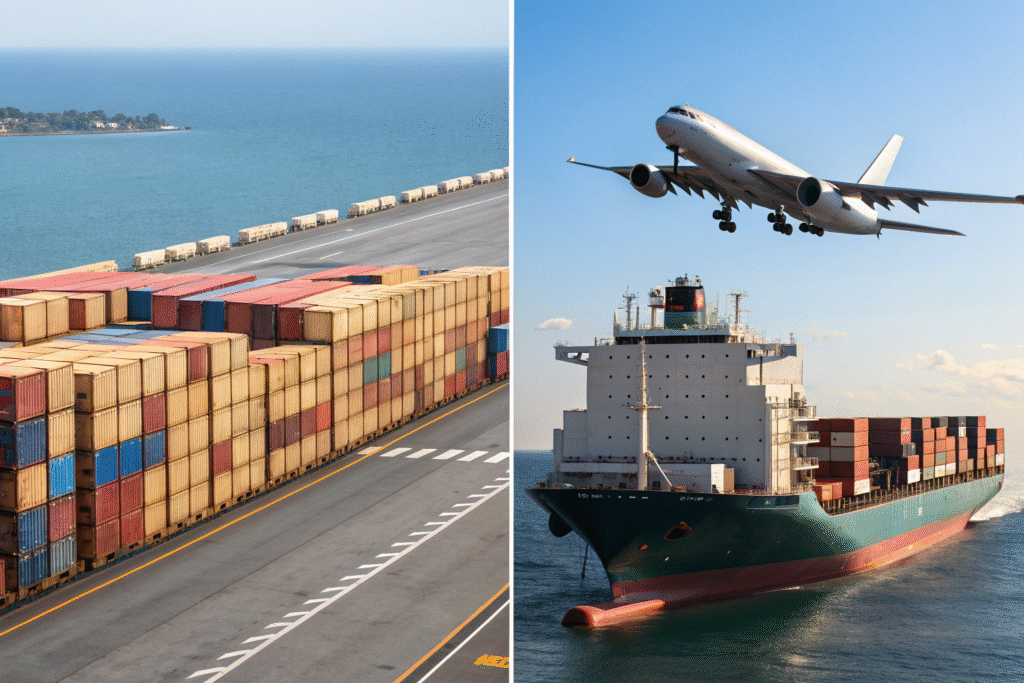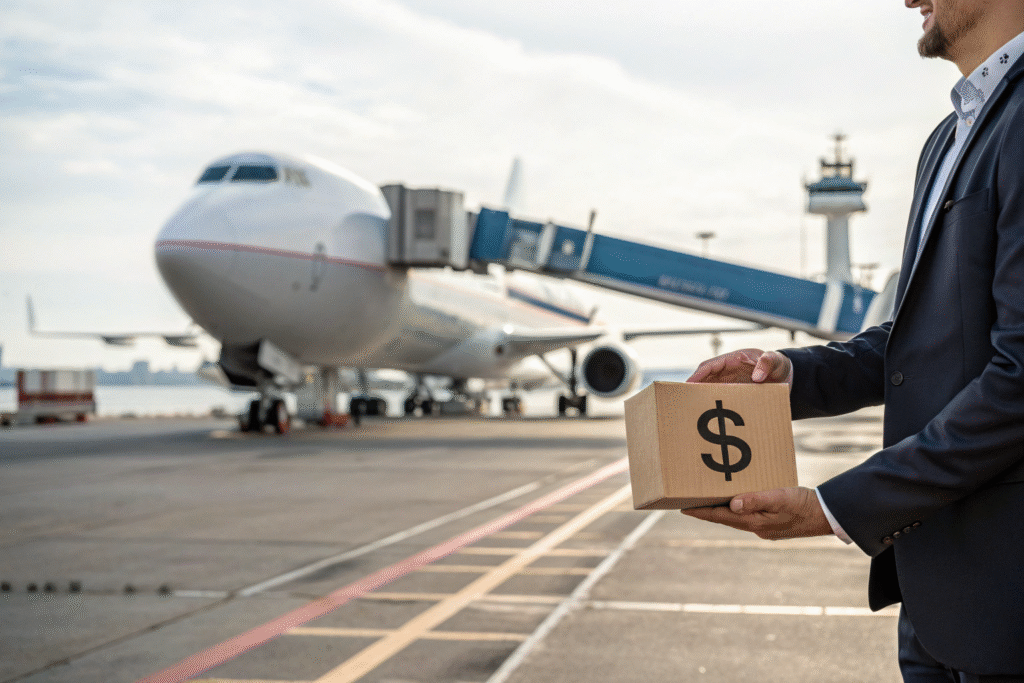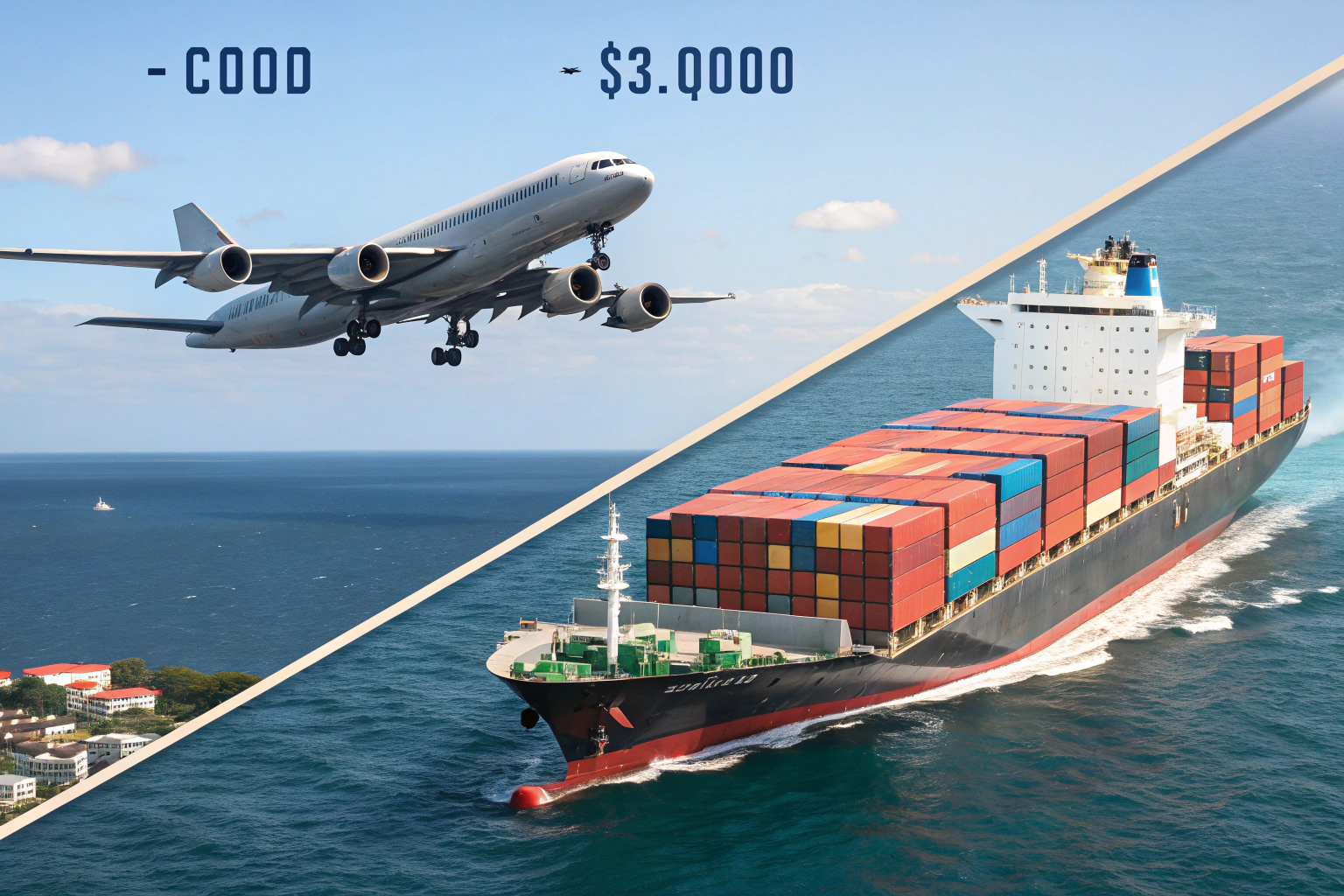This question comes up so often that I sometimes joke I could answer it in my sleep. Well, the quick answer is obvious: sea freight is cheaper. But actually, that’s only part of the story. In my experience, I’ve seen businesses regret choosing only by cost and others regret choosing only by speed. So the better way to think about it is: what works for your business, your cargo, and your timing.
On average, sea freight is about five or six times cheaper than air freight. But air, even though expensive, is faster, more reliable, and often worth it for urgent or high-value shipments.
From my observation, the decision isn’t really “cheap vs. expensive.” It’s more like “slow and affordable vs. fast and costly.” Both have their place.
How Much Does Sea Freight Cost Compared to Air Freight?
The cost gap is wide. Sometimes shockingly wide.
Sea freight usually costs $2,000–$4,000 for a 40-ft container. Air freight, on the other hand, can be $5–$8 per kilo or even more.
I had a client once who shipped a full container of clothing for around $3,200. Then he asked me what it would cost to send the same load by air. The estimate came back at over $60,000. He laughed at first, then sighed. “No way.” That reaction says it all.

What Are Typical Sea Freight Costs?
Depending on the route and season, sea freight stays in the range of $1,800 to $4,200. Platforms like Freightos update these numbers constantly. Carriers such as Maersk or COSCO publish their schedules, and those schedules affect pricing directly.
What Are Typical Air Freight Costs?
Air freight is per kilo. Rates average $5–$8/kg from China to the U.S. But during peak demand, especially around holidays, they can double. Express providers like DHL Express or FedEx are even higher. According to IATA Cargo, fuel price swings and capacity shortages drive these spikes.
Why Is Sea Freight Cheaper Than Air?
Honestly, the explanation is simple: scale. Ships move thousands of containers, planes move a fraction.
Sea freight is cheaper because the cost is spread across huge volumes, while air freight is pricey because of limited space, speed, and higher fuel costs.
In my experience, it feels almost unfair to compare. A modern container vessel can carry more than 20,000 TEUs. A big cargo plane like a Boeing 747 handles about 100 tons. That gap explains everything.

How Much Volume Can Each Method Handle?
Ships win, hands down. Statista shows how carriers now operate mega vessels capable of staggering capacity. Planes, even the largest, look tiny in comparison.
What About Fuel and Speed?
Planes burn fuel much faster. ICAO notes the per-kilo energy use is far higher than by sea. That’s why air is not just fast—it’s costly. Speed is bought with fuel.
When Does Air Freight Make Sense Despite the Cost?
Even though sea freight is far cheaper, I wouldn’t say air is a bad choice. Sometimes it’s the only smart choice.
Air freight makes sense for high-value, urgent, or fragile goods where time really is money.
I once had a client in electronics who faced a production deadline. If components didn’t arrive on time, his assembly line would stop. He paid nearly 10 times more for air, but compared to shutting down his factory? It was the cheaper option.

What Goods Fit Air Freight Best?
High-value and time-sensitive items: electronics, luxury fashion, pharmaceuticals, even flowers. IATA reports that while air handles only about 1% of trade volume, it represents nearly 35% of trade value. That tells you exactly who uses it.
What Are the Risks of Relying on Air Freight?
Cost volatility. During COVID, air freight rates from Shanghai to North America skyrocketed, as Statista shows. If you rely too heavily on air, sudden jumps can wreck your budget.
How Should Businesses Choose Between Air and Sea Freight?
It’s rarely a black-and-white choice. The smart approach is often a mix.
Most businesses send bulk cargo by sea for savings, then use air selectively for urgent orders.
From my observation, the best strategy is balance. For example, one apparel importer I know sends most stock by sea but flies a few boxes of new designs by air to catch seasonal sales. That way, they stay competitive without destroying margins.

Is It Possible to Combine Both Methods?
Yes, and it’s becoming common. Platforms like Flexport make it easier to coordinate hybrid solutions—sea for the bulk, air for the urgent. It’s a practical way to control both cost and timing.
What Role Do Freight Forwarders Play in This Choice?
Forwarders help clients see the real cost picture. Sometimes paying for air avoids penalties or lost sales, which is cheaper in the long run. I think the value of a forwarder is not just arranging transport but helping decide which method makes sense for each shipment.
Conclusion
So, which is cheaper: air or sea freight from China? The answer is clear—sea wins on cost, almost every time. But air wins on speed, and sometimes speed is priceless.
As someone who has watched this trade lane for years, I can tell you I’ve seen companies lose big by choosing only price and others lose by ignoring time. The real trick is to know your product and your deadlines. For most, sea is the backbone. Air is the backup when time matters more than money.









